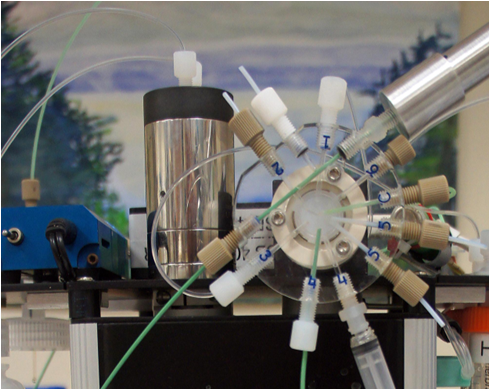Sequential Injection was originally designed for monitoring of industrial processes. Therefore, at that time, no attempt was made to miniaturize the apparatus, since it was robustness and reliability of the instrument that were the important features. Later, when the flow path was miniaturized and integrated with flow cell, within a monolithic structure mounted atop a multi position valve, the device was nicknamed in jest “lab-on-valve” (LOV).
OUTLOOK
2.6.1.

Surprisingly, not only the name, but also the device and its concept became widely accepted, finding applications in research laboratories worldwide. Yet until now, SI was never considered as suitable tool for serial assays, since it operated at a low sampling frequency.
Examples of diverse assays, presented in Section 2.2.12. and following pages provide a proof of concept and show versatility of miniSIA technology. There remains, of course, a substantial work to be done, on evaluation influence of matrix effects, on method validation and on apparatus perfection, before these nutrient assays will become accepted for real life applications in oceanography, environmental research and other fields.
Yet what we know now is, that versatility and efficiency of the combination of the lab-on-valve platform with synchronously refilling pump, supported by knowledge of reaction kinetics opened way to:
- acceleration and simplification of SI assays in SHC mode, making them suitable for serial analysis.
- increase in sensitivity in SFC mode , making SI assays suitable for trace analysis of essential elements and nutrients for research in chemical oceanography.
Hopefully, advantages of the reinvented miniSIA technique, will be recognized and used, not only for serial assays, but also for research purposes, for which SI is, due to its versatility ideally suited. Computer control of flow rates, flow direction, sample splitting, incubation at selected times, and temperature, make this technique a valuable tool for research in many fields.










